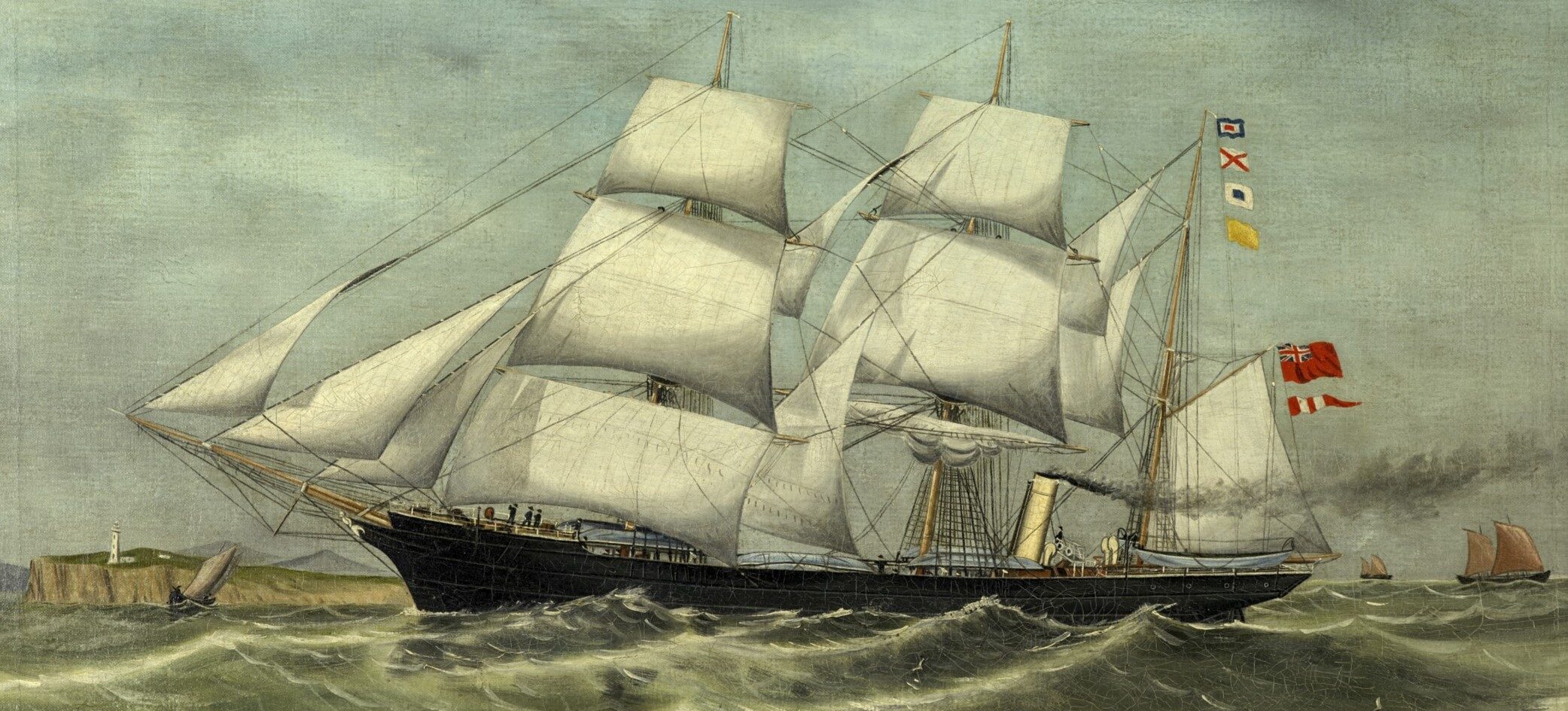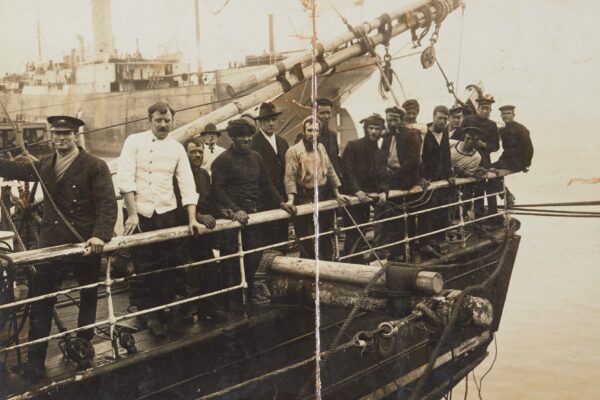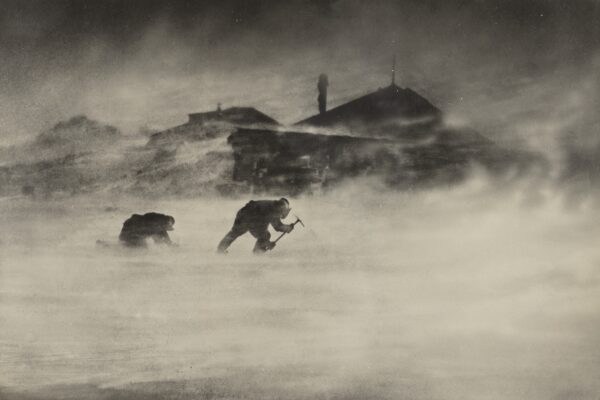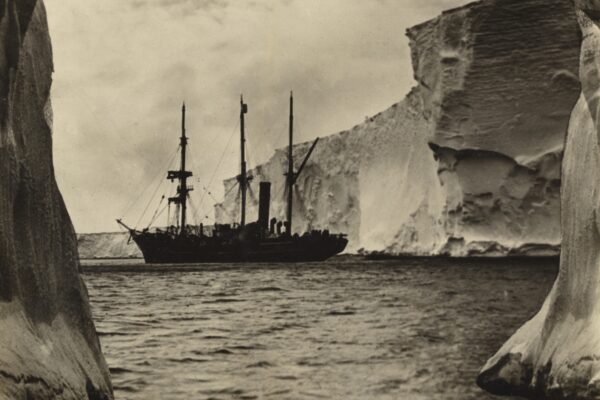In a shipyard in Dundee, Scotland, in 1876, the SY Aurora began life seemingly destinated for a career as an Arctic whaler.
It ended in mystery four decades later somewhere on the open waters in the South Pacific, only a lifebuoy to show it had existed.
Now the ‘life’ of the 580-tonne Aurora is being celebrated with an exhibition at the Australian National Maritime Museum (ANMM) in Sydney.
Museum senior curator Daina Fletcher says their Frozen Witness exhibition comprises of a collection donated by descendants of the ship’s early captain, James Fairweather.
“This small exhibition features a selection of historic objects donated to the National Maritime Collection from family members which will thrill visitors through the drama, ambition, expertise and poignancy they embody,” she says.
“Overall, the story of this vessel touches lives and keynotes from the early history of Antarctic exploration and Australia’s part in it, in expeditions (especially that of Sir Douglas Mawson) which contributed to Australia’s territorial claim to more than 42% of the continent in the Antarctic Treaty of 1959.”
AURORA’S LIFE STORY
The Aurora spent most of its life in the waters of Newfoundland and Greenland during the last decades of the seal and whale industry.
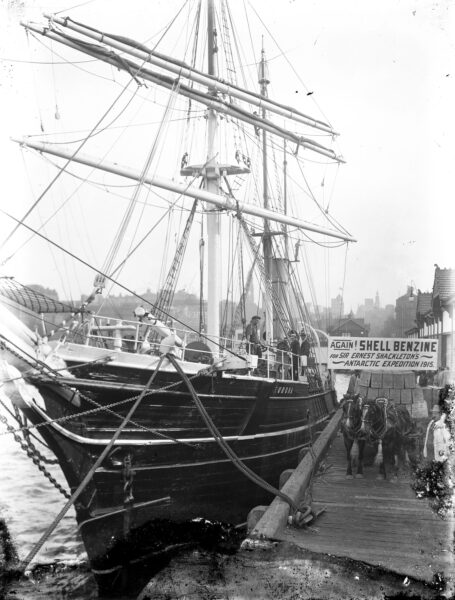
The ANMM says that on one well-documented voyage from Dundee in 1884 under Captain James Fairweather saw the vessel return with 28,000 seals caught for their fur and oil.
In 1911, the vessel was bought for £6000 by John King Davis, an Australian geologist, and Antarctic veteran Sir Douglas Mawson’s Australasian Antarctic Expedition (AAE).
Refitted in London then sailed to Hobart, Aurora carried scientists, supplies and 40 Greenland huskies to Antarctica.
In three voyages, the Aurora supported the creation of bases at Macquarie Island, Commonwealth Bay and Queen Mary Land as more than 6400 km of land was explored, groundbreaking scientific discoveries made and 22 volumes of research reports.
Then Mawson’s sledging companions died while he missed the departing Aurora by hours, surviving another winter before his rescue.
SHACKLETON’S SHADOW
In 1914, the Aurora was pressed into service as the Ross Sea supply ship for Shackleton’s Imperial Trans-Antarctic Expedition.
The Ross Sea party laid down depots for a crossing that never came: Shackleton’s Endurance was lost in the Weddell Sea while on the other side of the continent, the Aurora became trapped in ice and drifted over 1200 miles for nine months.
Under First Officer Joseph Stenhouse, the Aurora reached New Zealand in 1916, refitted and returned to Antarctica to rescue seven survivors from the stranded sledging party in early 1917; three expedition members, including the captain, had died on the ice.
MYSTERIOUS END
On June 20, 1917, the Aurora departed Newcastle, Australia, for Chile with 21 onboard and a cargo of coal but never made it.
Only one relic was ever found: a lifebuoy, recovered months later; this lifebuoy is now a centrepiece of the Frozen Witness exhibition.
In the 1930s, the lifebuoy was presented to Sir Lionel Hooke, who was a young wireless operator aboard Aurora during the Ross Sea expedition.
The exhibition also features objects and images from the National Maritime Collection as well as from Museums Victoria, Royal Australian Navy Heritage Collections, Canterbury Museum, Memorial University of Newfoundland and the National Film and Sound Archive.
The exhibition has the support of the great-grandchildren of Captain Fairweather in memory of their father, James S Fairweather (1926-2015).
Frozen Witness will run into 2026, a museum spokeswoman confirmed.
OTHER ANMM NEWS: Museum stands by identification of US shipwreck as Endeavour

